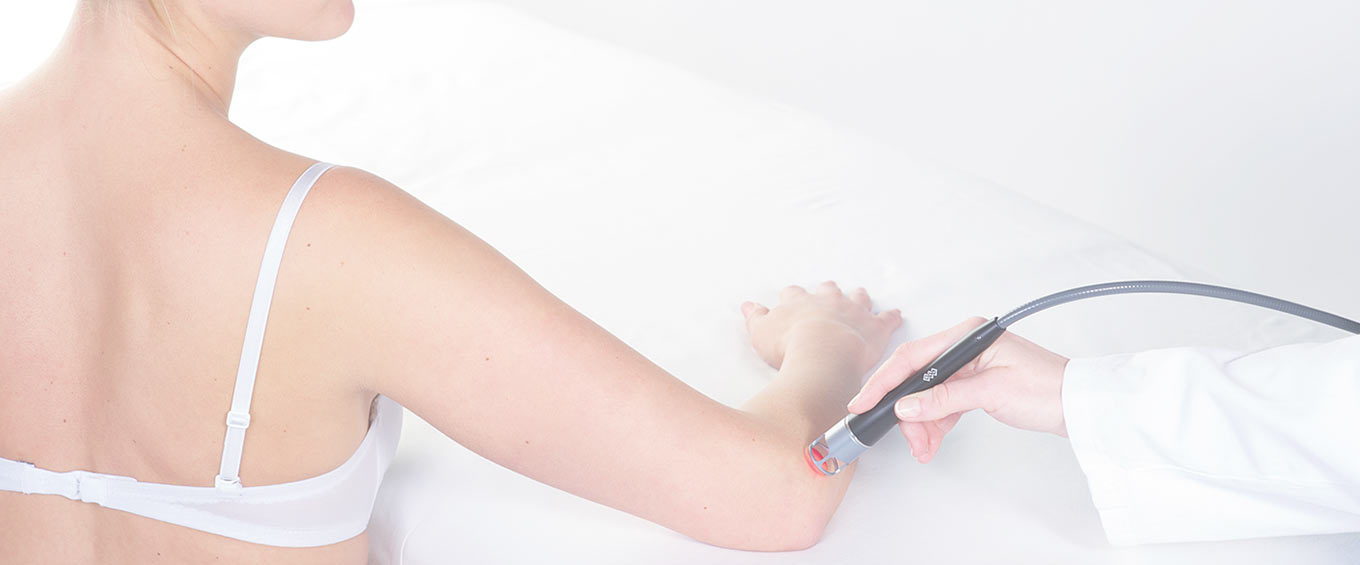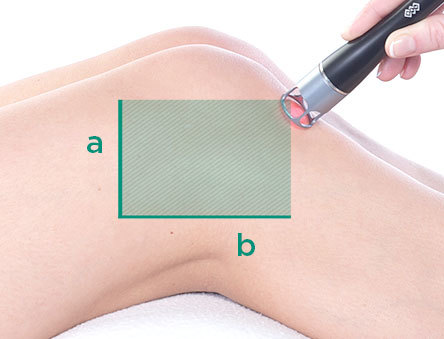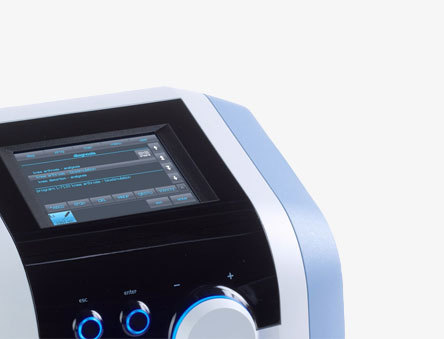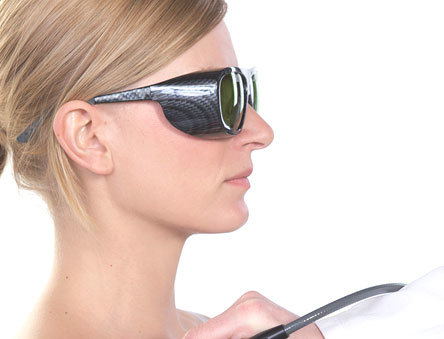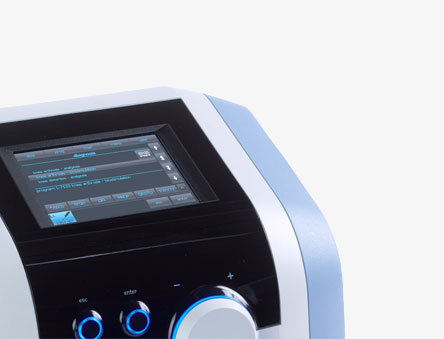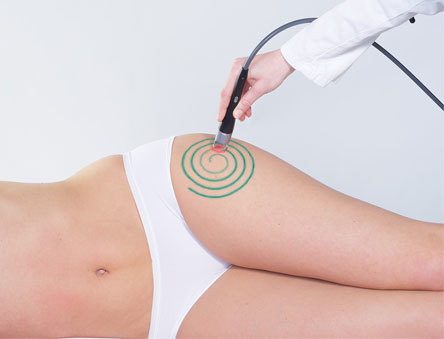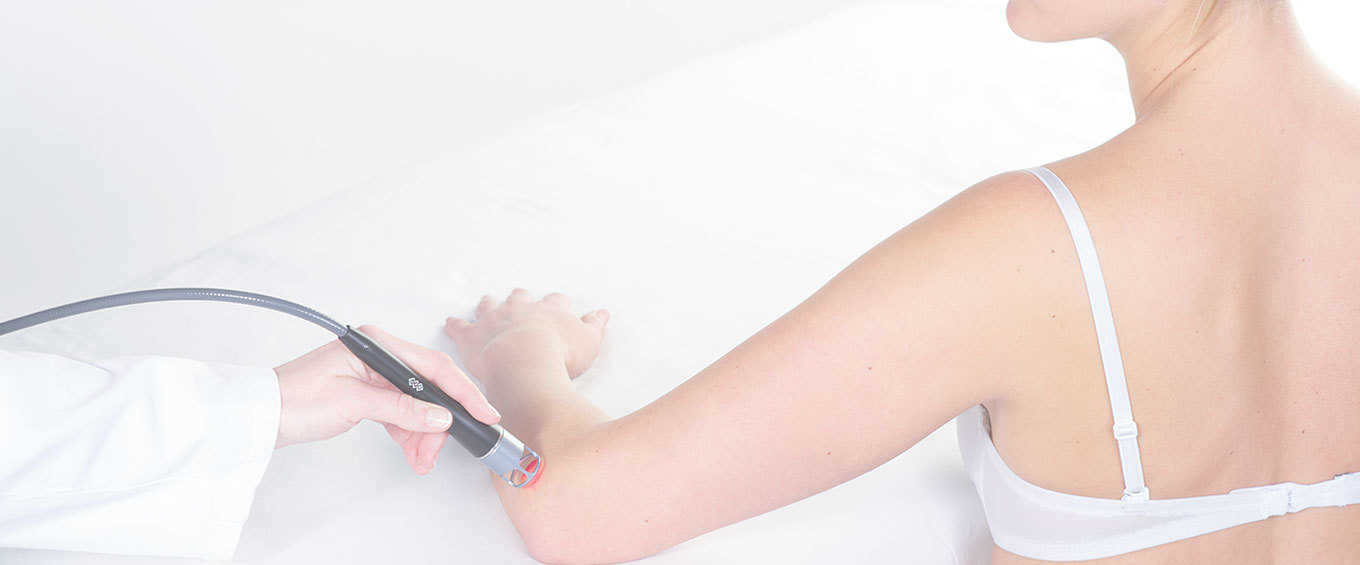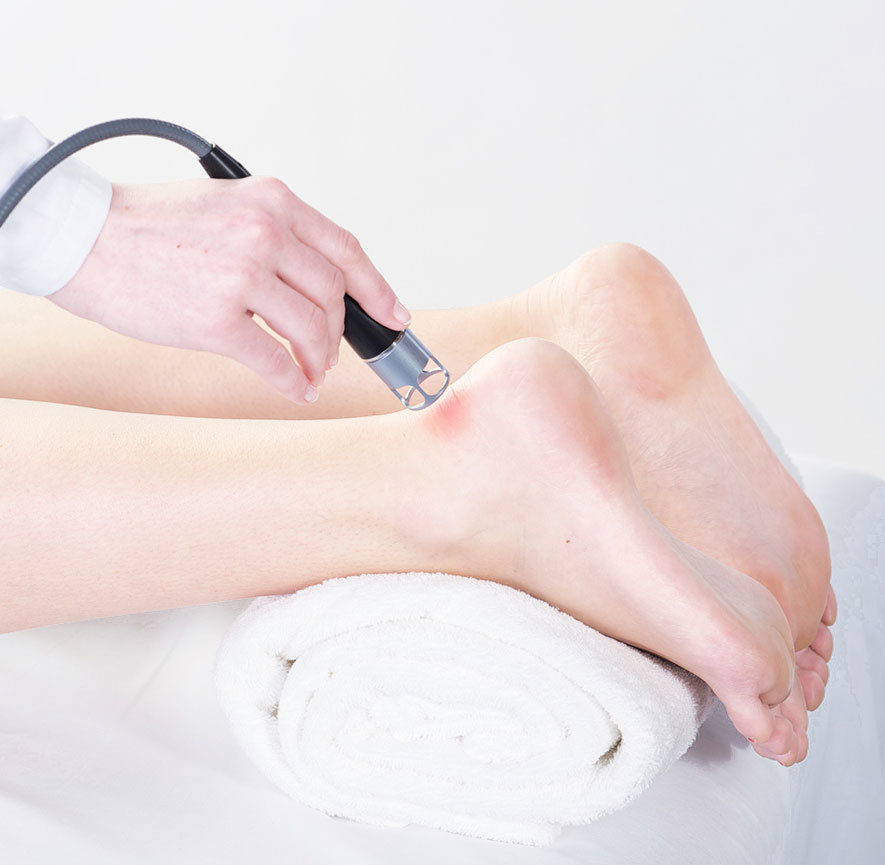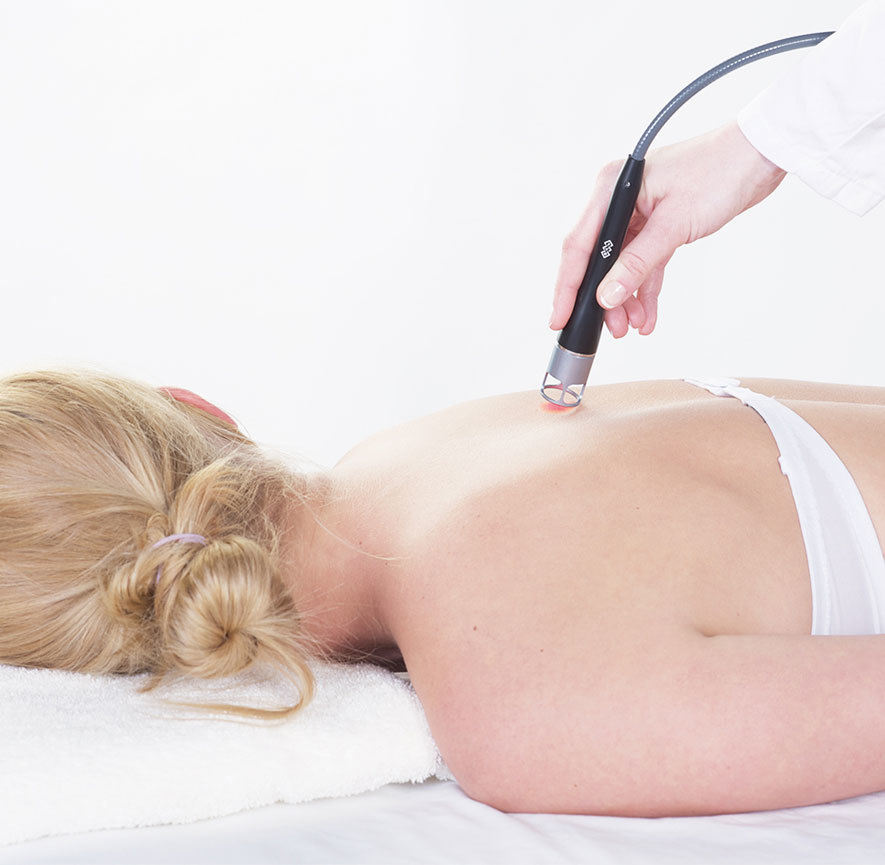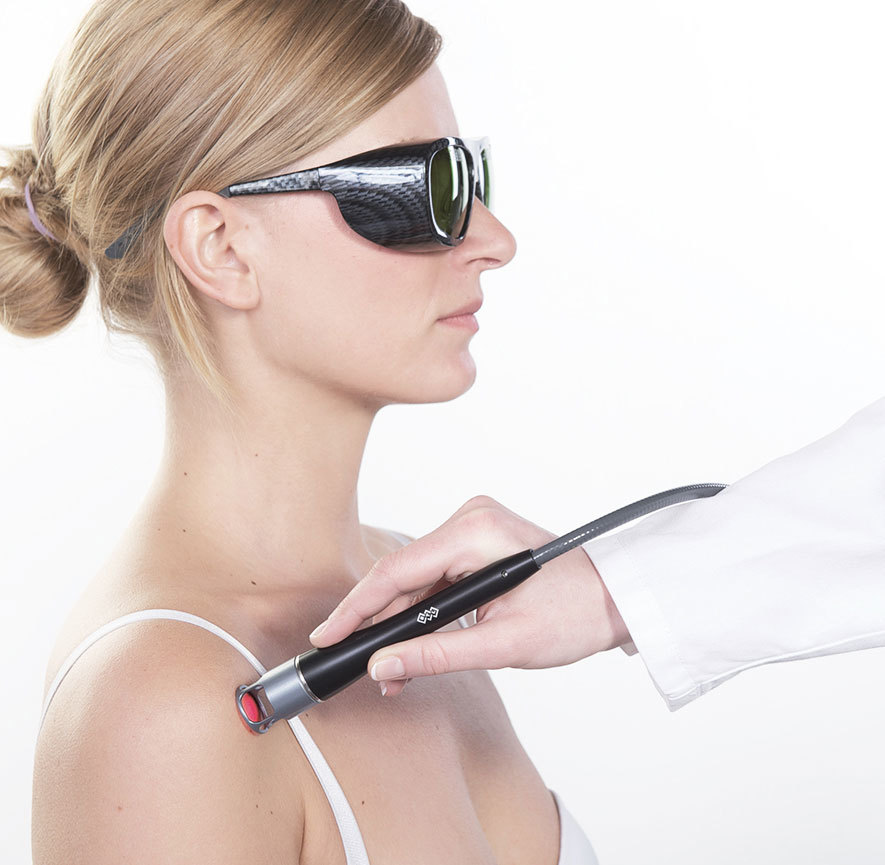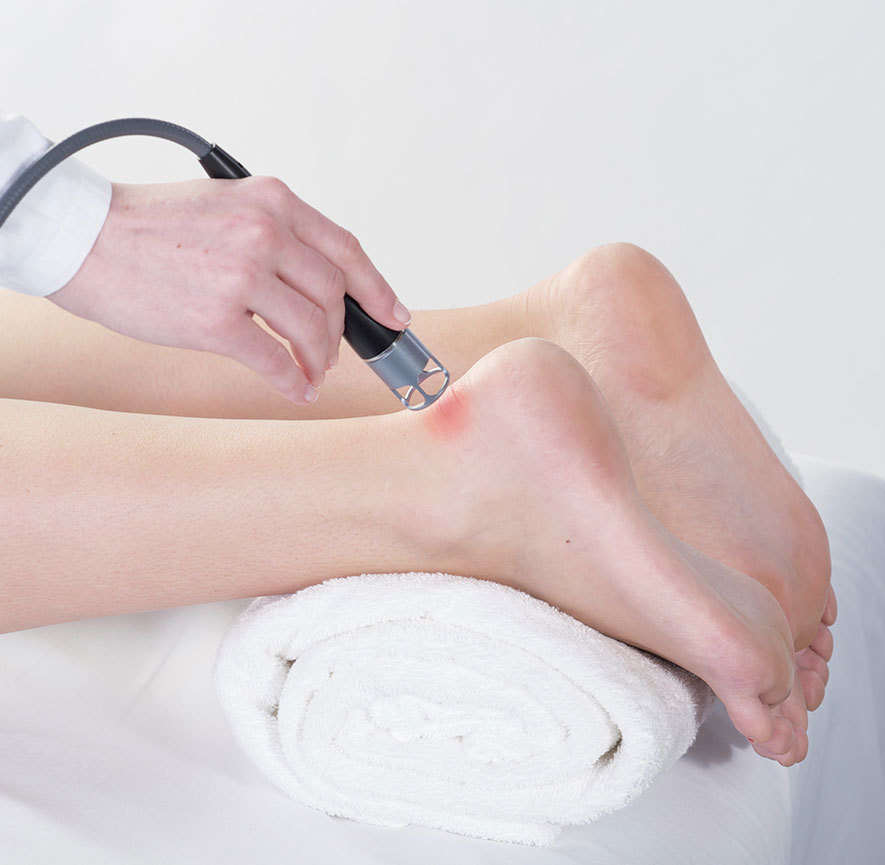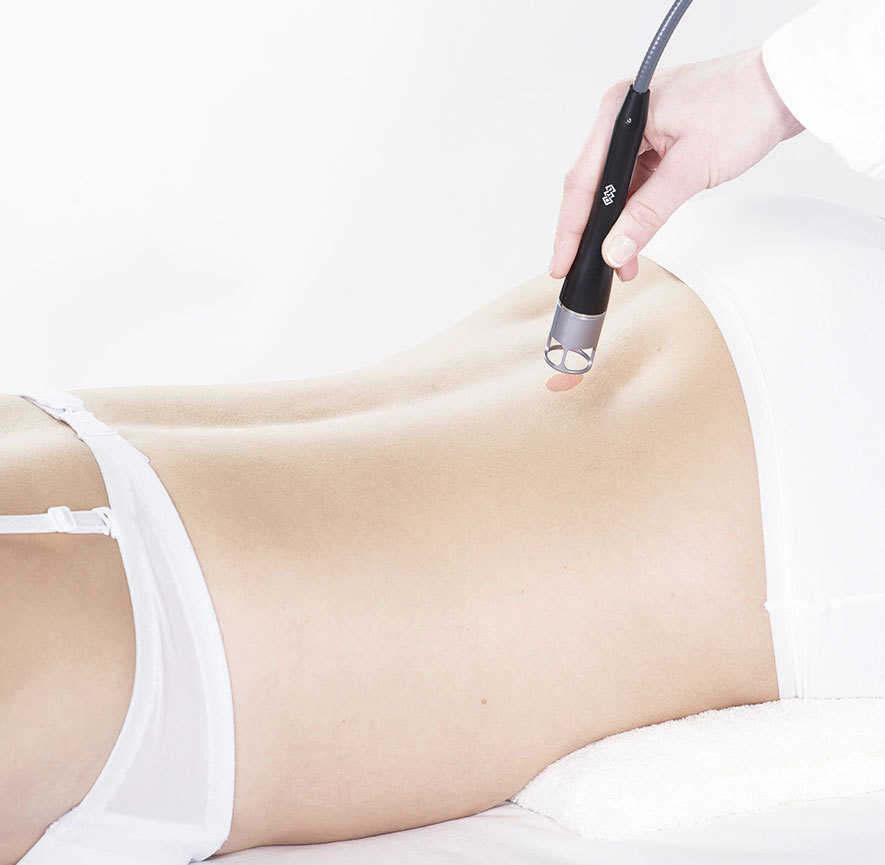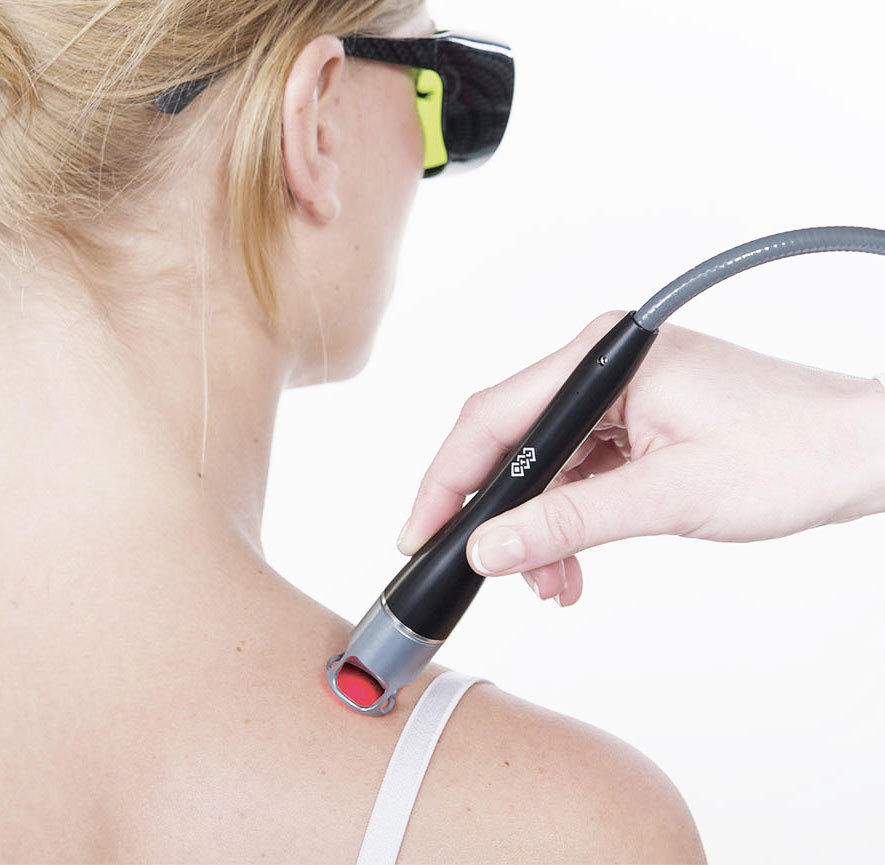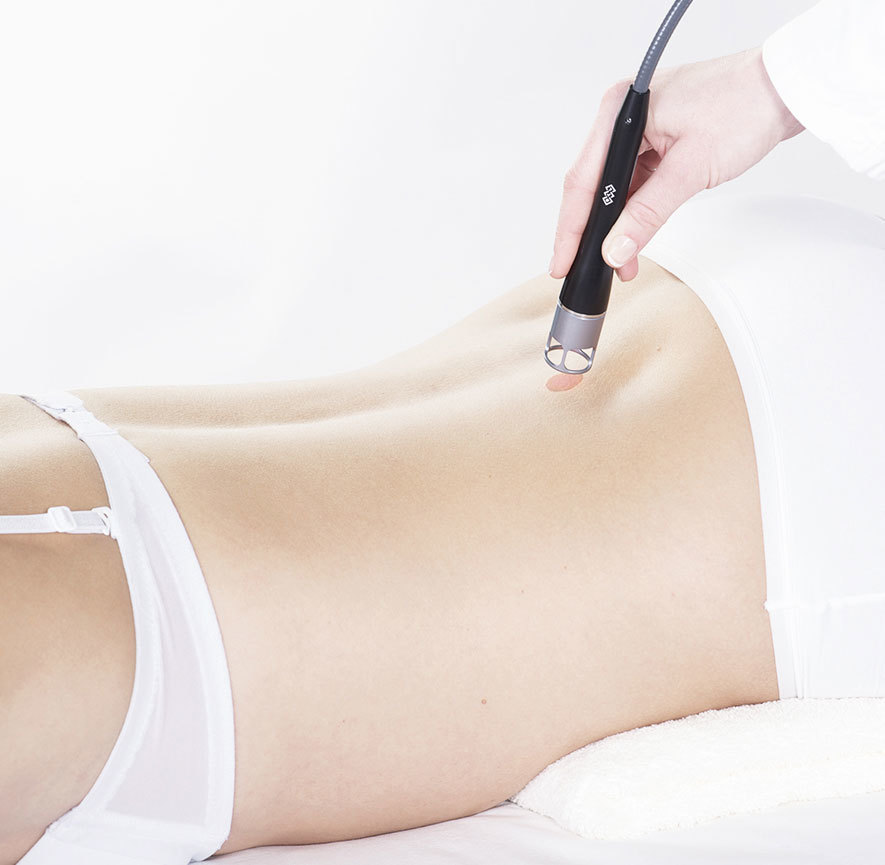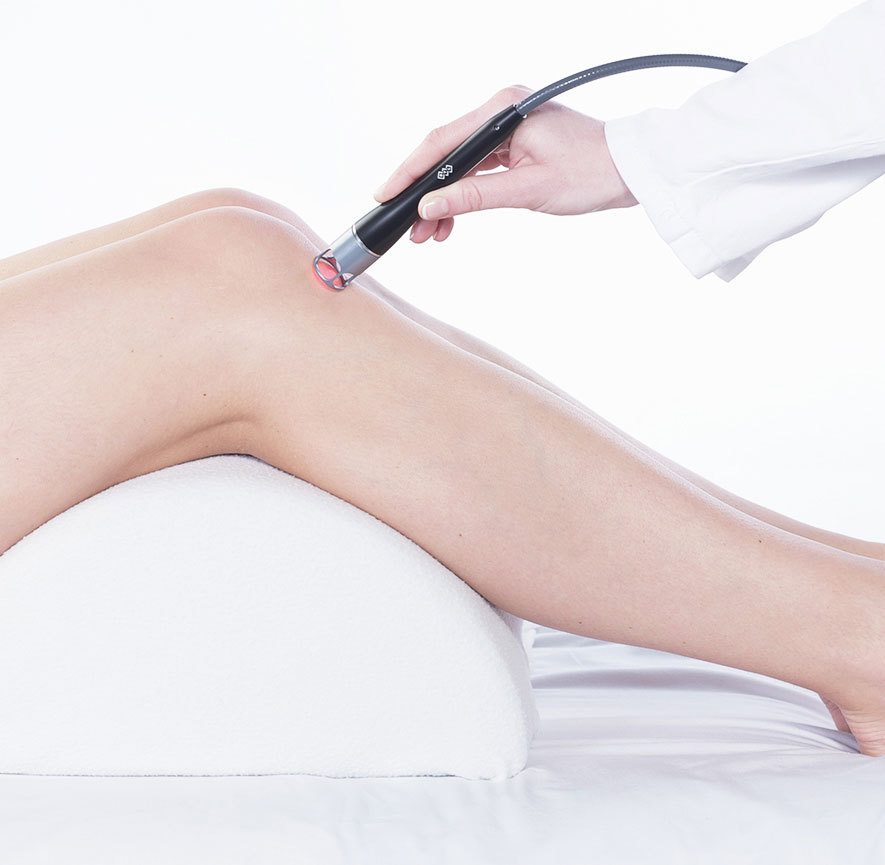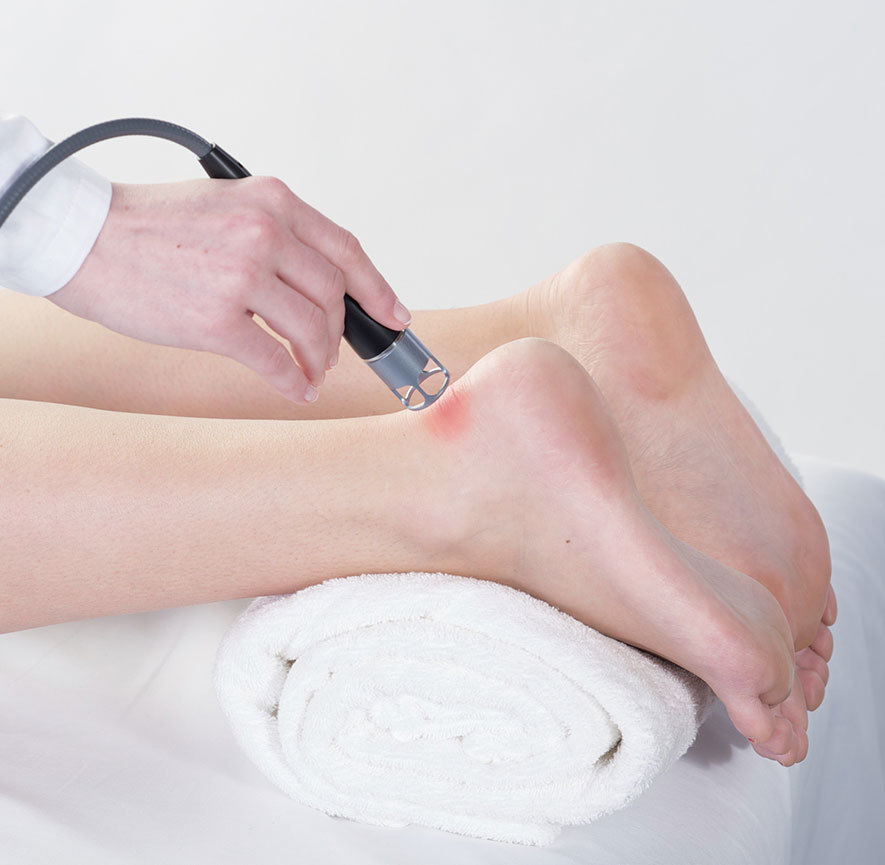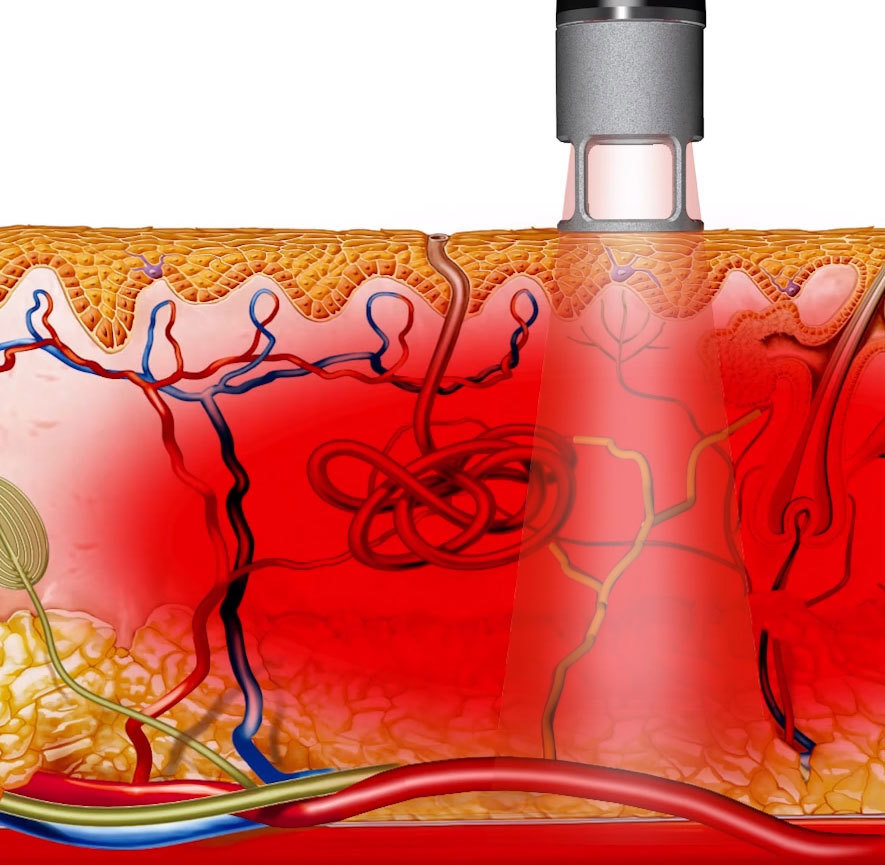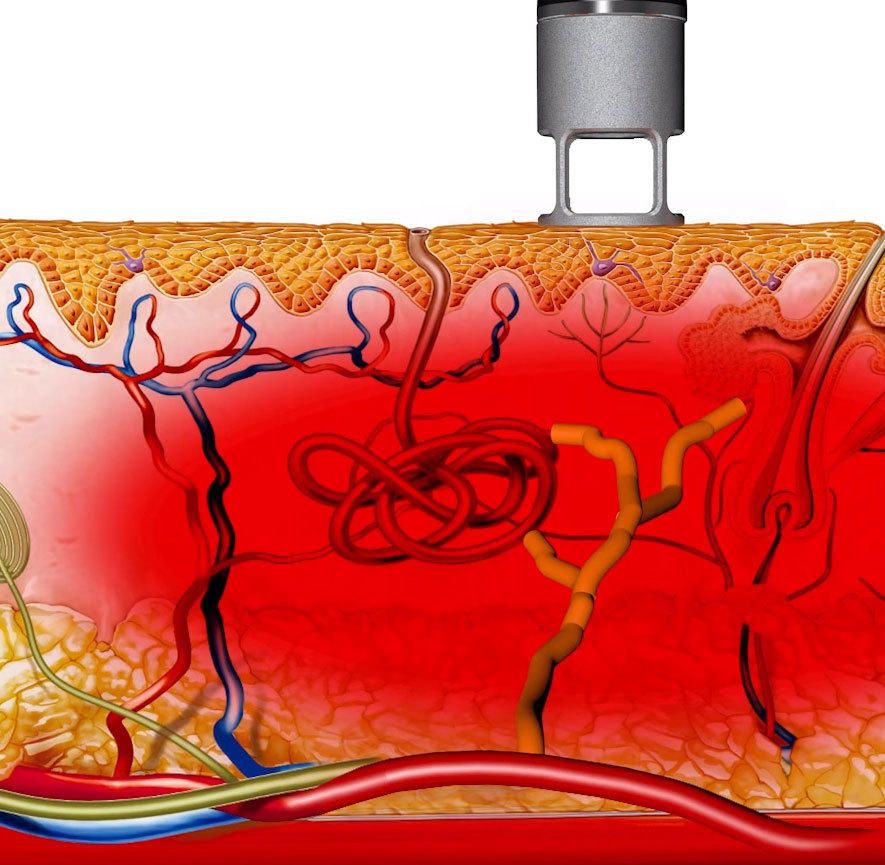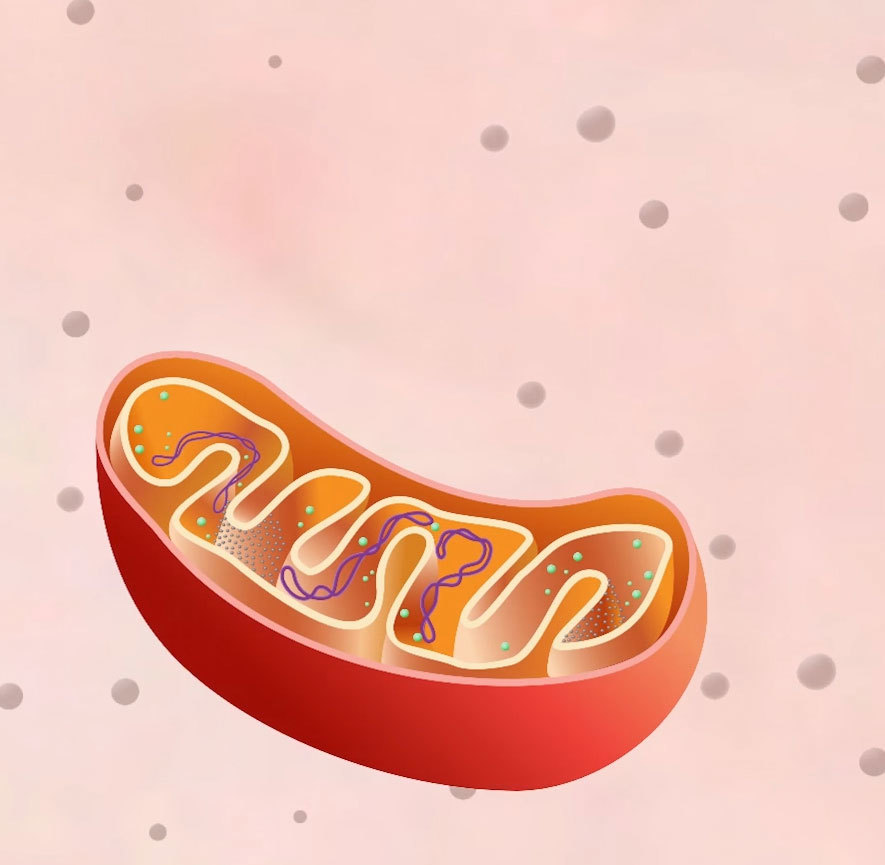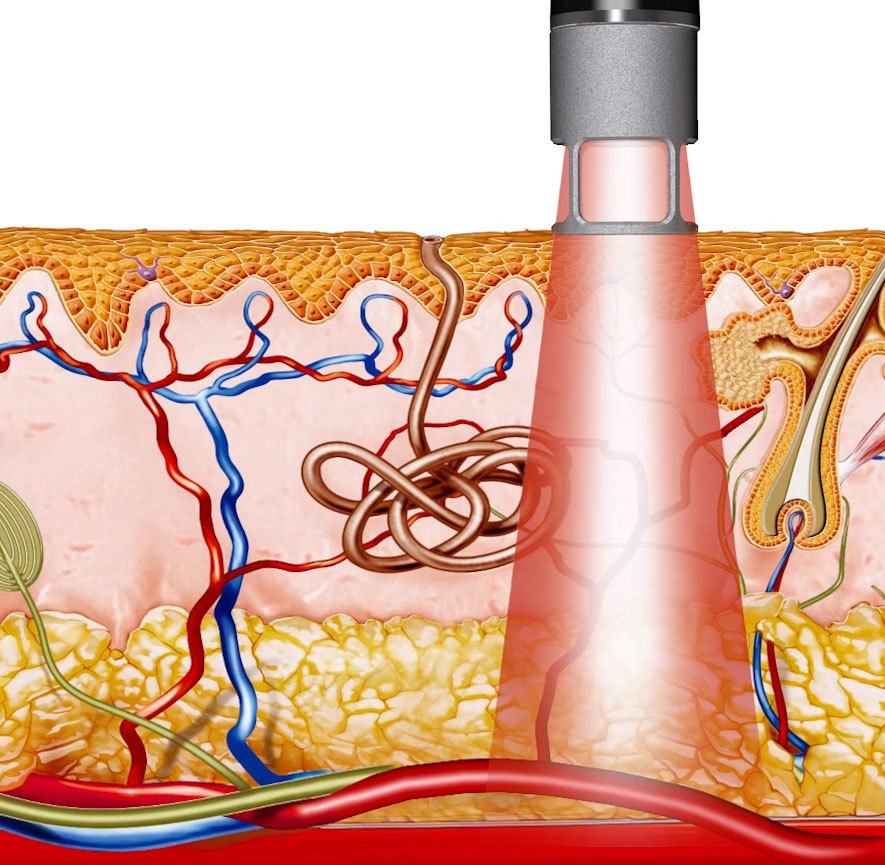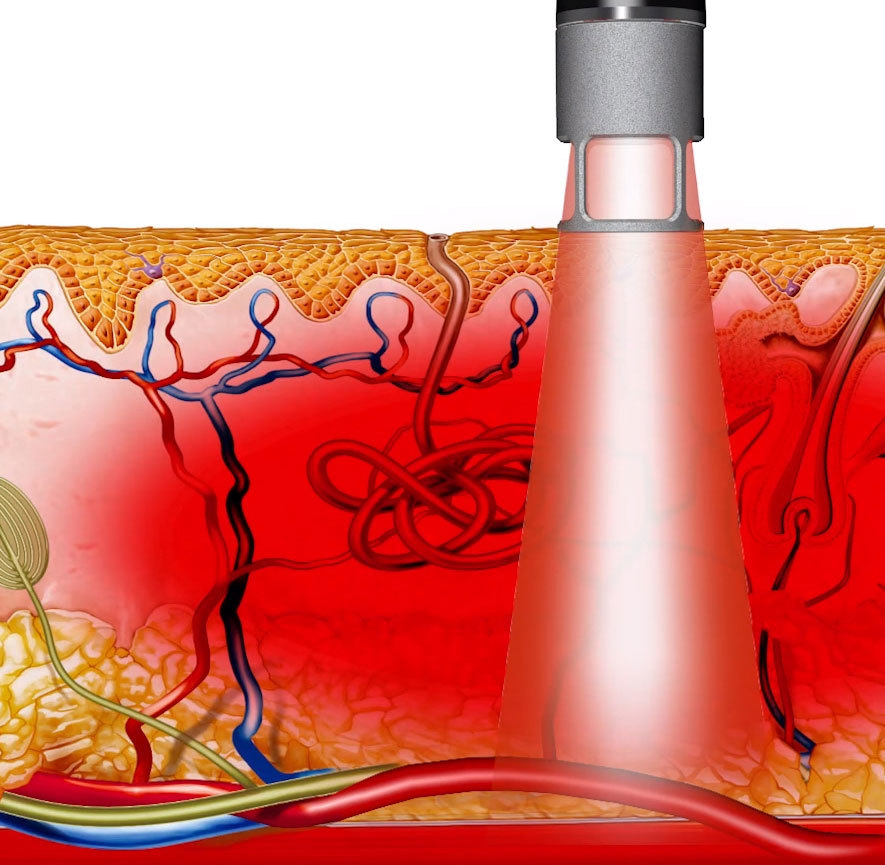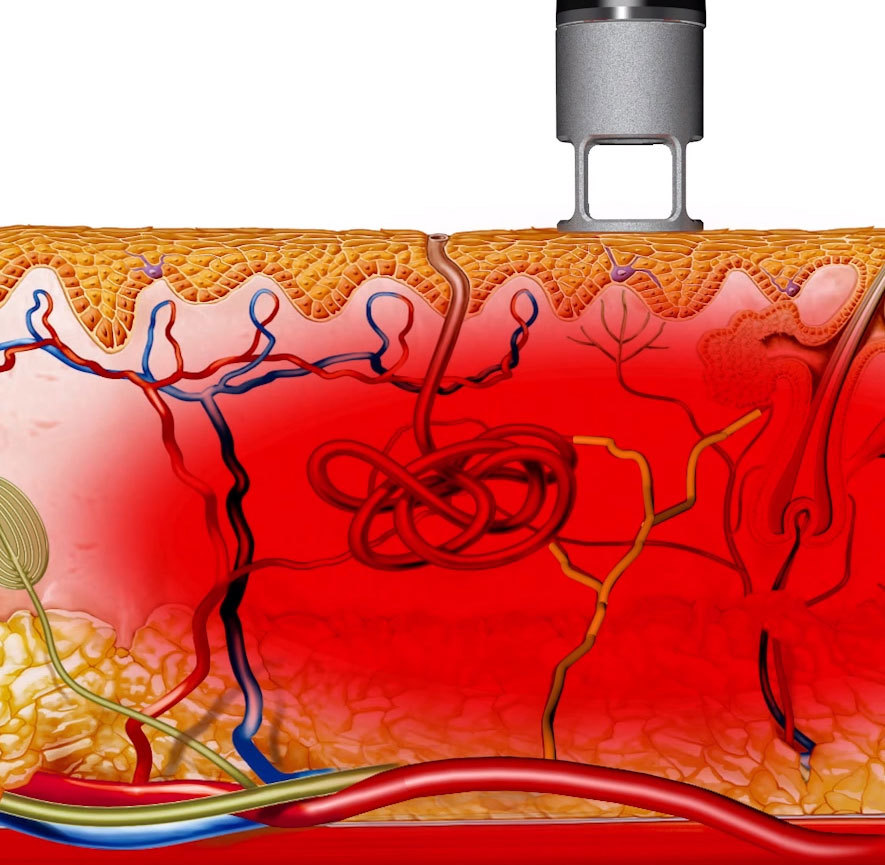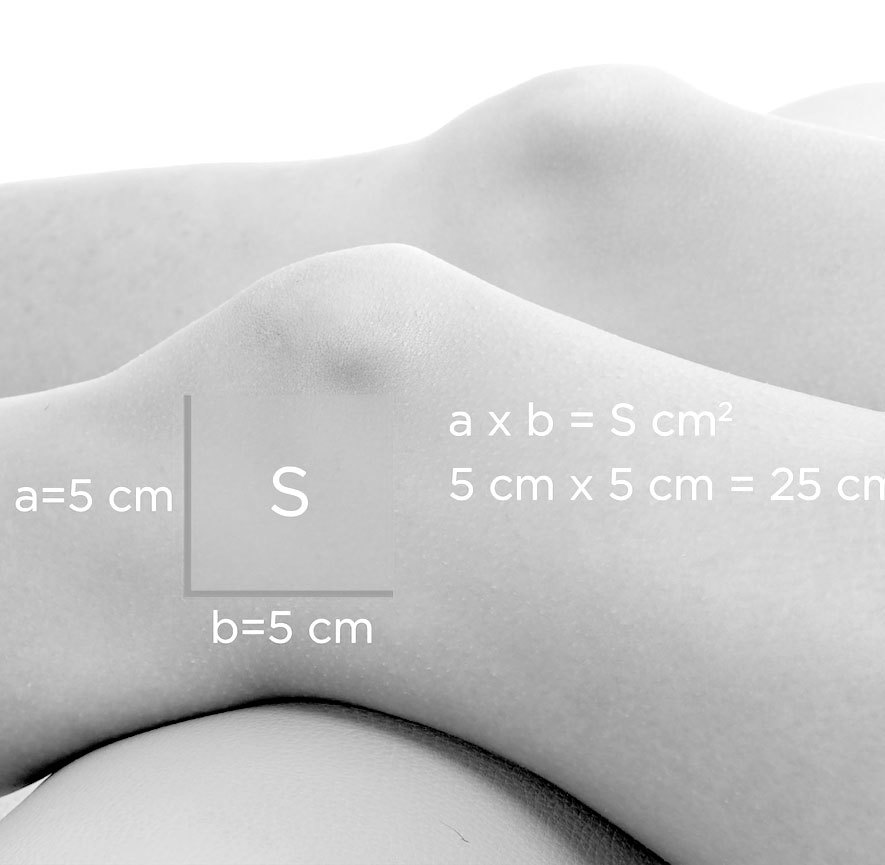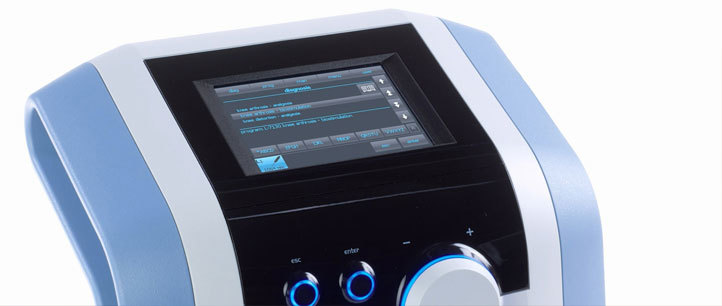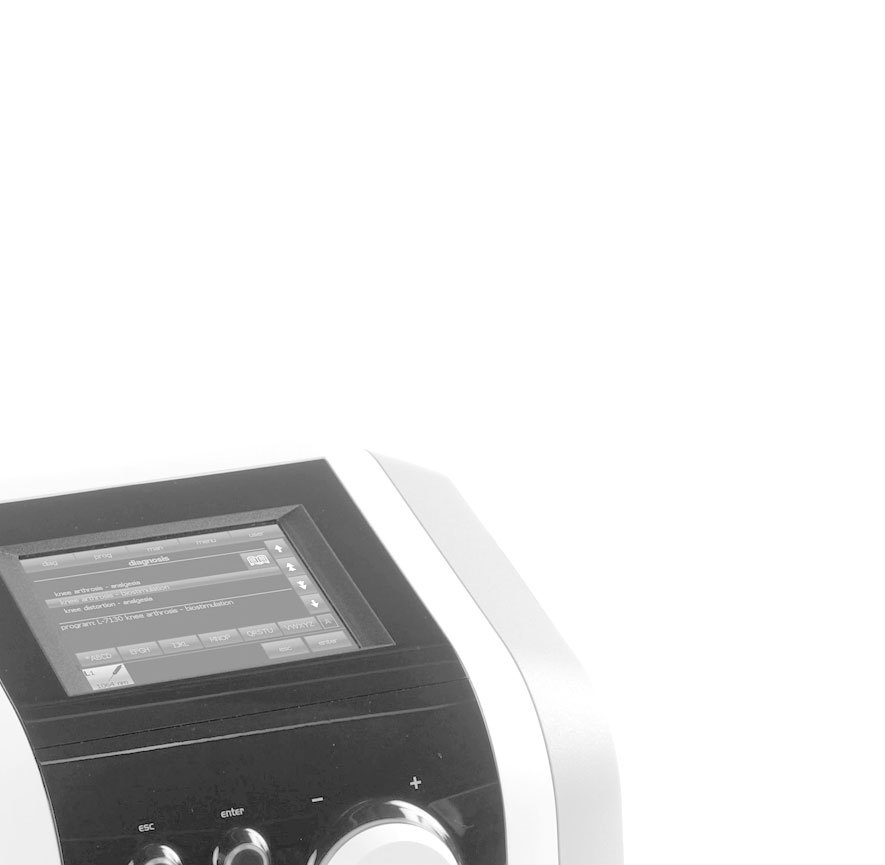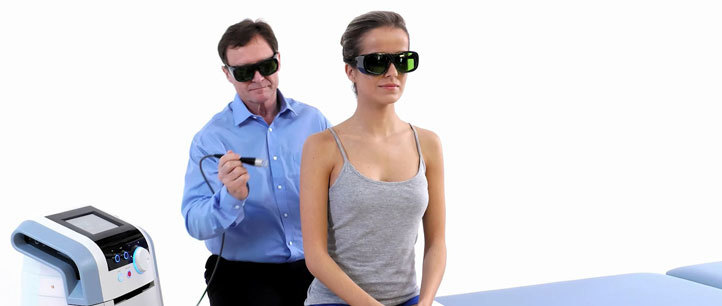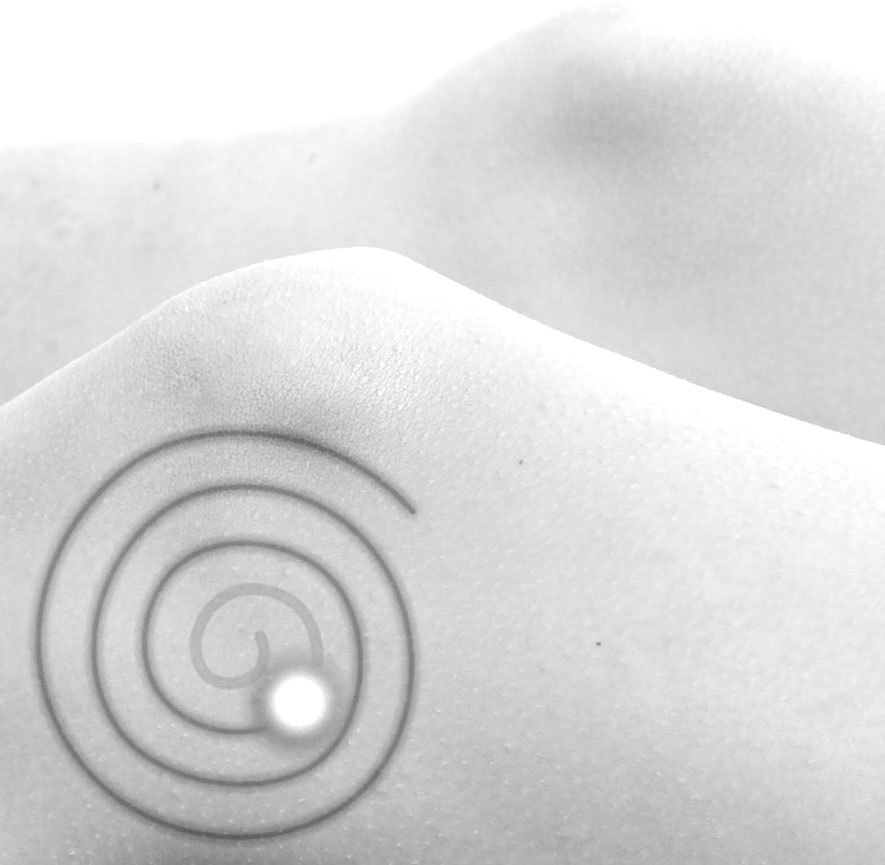mechanism
of action
Laser (acronym for Light Amplification by Stimulated Emission of Radiation) can be used as a therapeutic device which produces monochromatic (one specific wavelength), coherent (constant phase) and polarized (directional) light.
generation
The source of laser beam in therapeutic lasers is typically a semiconductor diode capable of producing light of one specific wavelength (e.g. 1064nm).
The light generated by the diodes is then directed into an optical fiber, end of which is connected to the applicator. The beam is further processed by a series of lenses which ensure the right direction and diameter of the beam and consequently the spot.
Therapeutic lasers are defined by their power and wavelength. Wavelength is important as the ideal effects on human tissue are of light in the “therapeutic window” (approx. 650 – 1100 nm). 1064nm wavelength of the High Intensity Laser ensures a good ratio between penetration and absorption in the tissue. The amount of power a laser can safely deliver can reduce therapy time by more than a half.
Check the calculatorclasses
Based on the power and wavelength lasers are divided into several classes. Therapeutic lasers are typically of class 3B, low level laser therapy (LLLT) with power less than 500 mW, and class 4, High Intensity Laser with power 500 mW and more.
modes
The High Intensity Laser can be used in two modes – pulsed and continuous. Pulsed mode represents turning the laser on and off with a very high frequency and is used as an analgesic treatment. Continuous irradiation is a mode in which the laser remains turned on the whole time of the therapy and is used to promote biostimulation, healing and recovery.
safety
Although therapeutic High Intensity Laser is generally safe to use and promotes reparative processes, it can still damage the eye and so protective eyewear is obligatory throughout the therapy. With increasing power of the High Intensity Laser, caution is in place as to its thermic effects which on one hand provide very pleasant therapy, but on the other, if not monitored and used by a trained operator, can damage the tissue.

